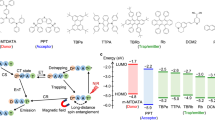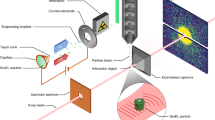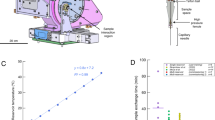Abstract
INVESTIGATIONS carried out in our laboratory1 on the optical behaviour of serum-albumin protein and of its main constituents have not given any serious evidence of the photo-conduct or behaviour of the protein. Things are exactly as if each amino-acid, taking off a fraction of the quantum it absorbs selectively, reacted independently from its partners. The time of radiative deactivation by slow fluorescence is the only factor varying with the association process and the chemical purity of the aggregate.
This is a preview of subscription content, access via your institution
Access options
Subscribe to this journal
Receive 51 print issues and online access
$199.00 per year
only $3.90 per issue
Buy this article
- Purchase on SpringerLink
- Instant access to full article PDF
Prices may be subject to local taxes which are calculated during checkout
Similar content being viewed by others
References
Douzou, P., and Francq, J. C., J. Chim. Phys. (in the press).
Allen, B. T., and Ingram, D. J. E., in Free Radicals in Biological Systems, 215 (Academic Press, 1960).
Gordy, W., Ard, W. B., and Shields, H., Proc. U.S. Nat. Acad. Sci., 41, 983 (1955).
Author information
Authors and Affiliations
Rights and permissions
About this article
Cite this article
DOUZOU, P., PTAK, M. & ROPARS, C. Examination of Optically Excited Amino-acids by Electron Spin Resonance at Very Low Temperature. Nature 197, 1105–1106 (1963). https://doi.org/10.1038/1971105a0
Issue date:
DOI: https://doi.org/10.1038/1971105a0



